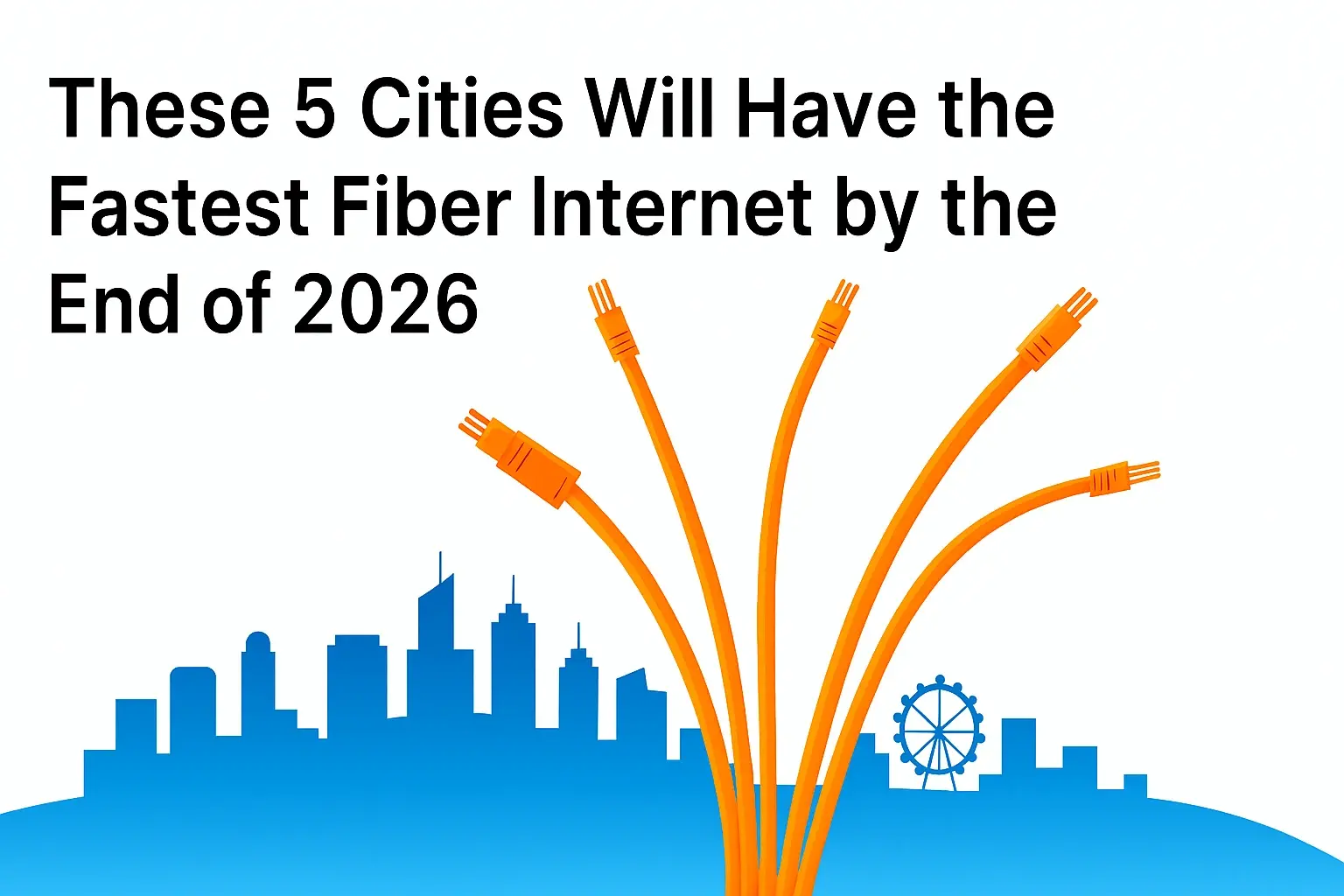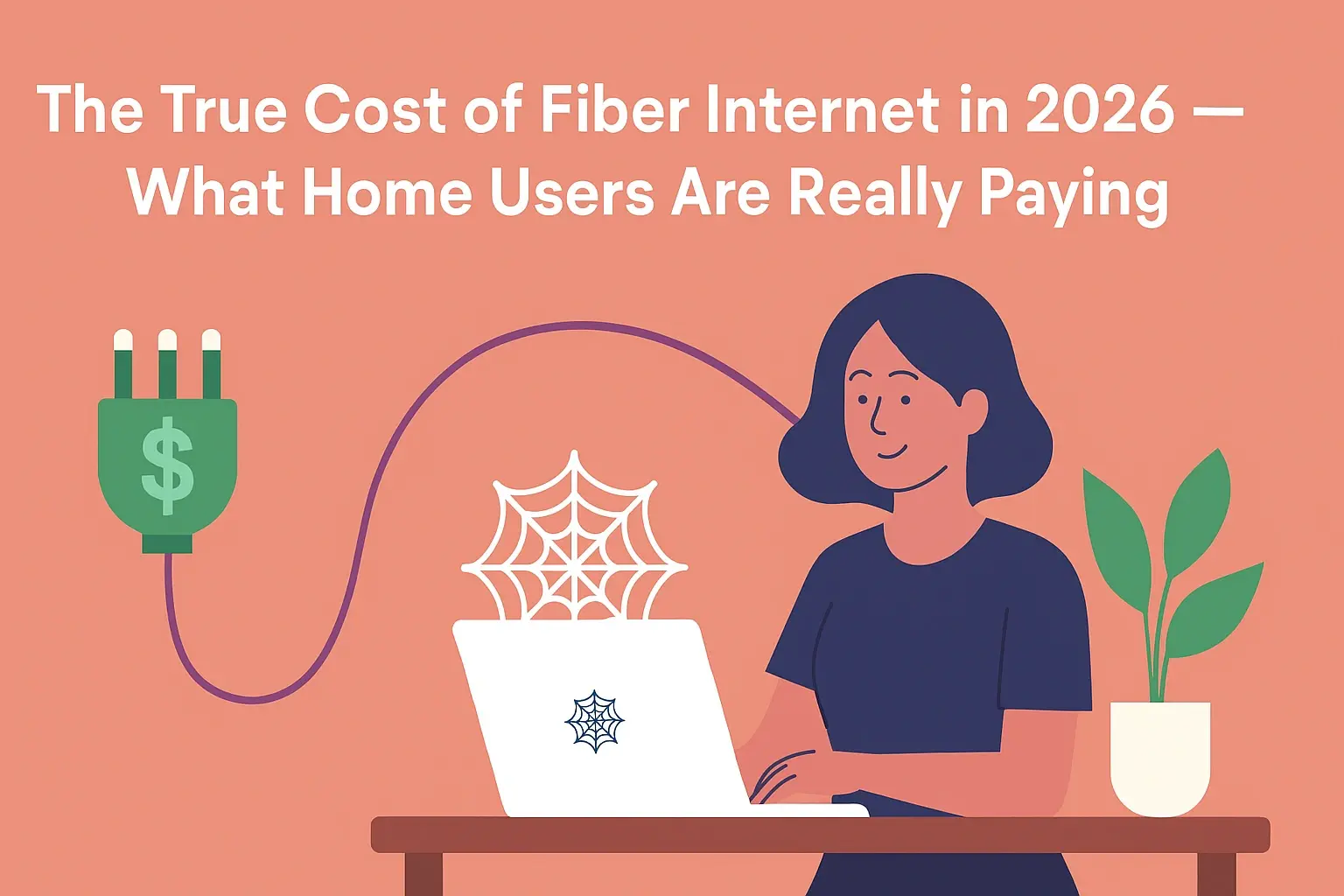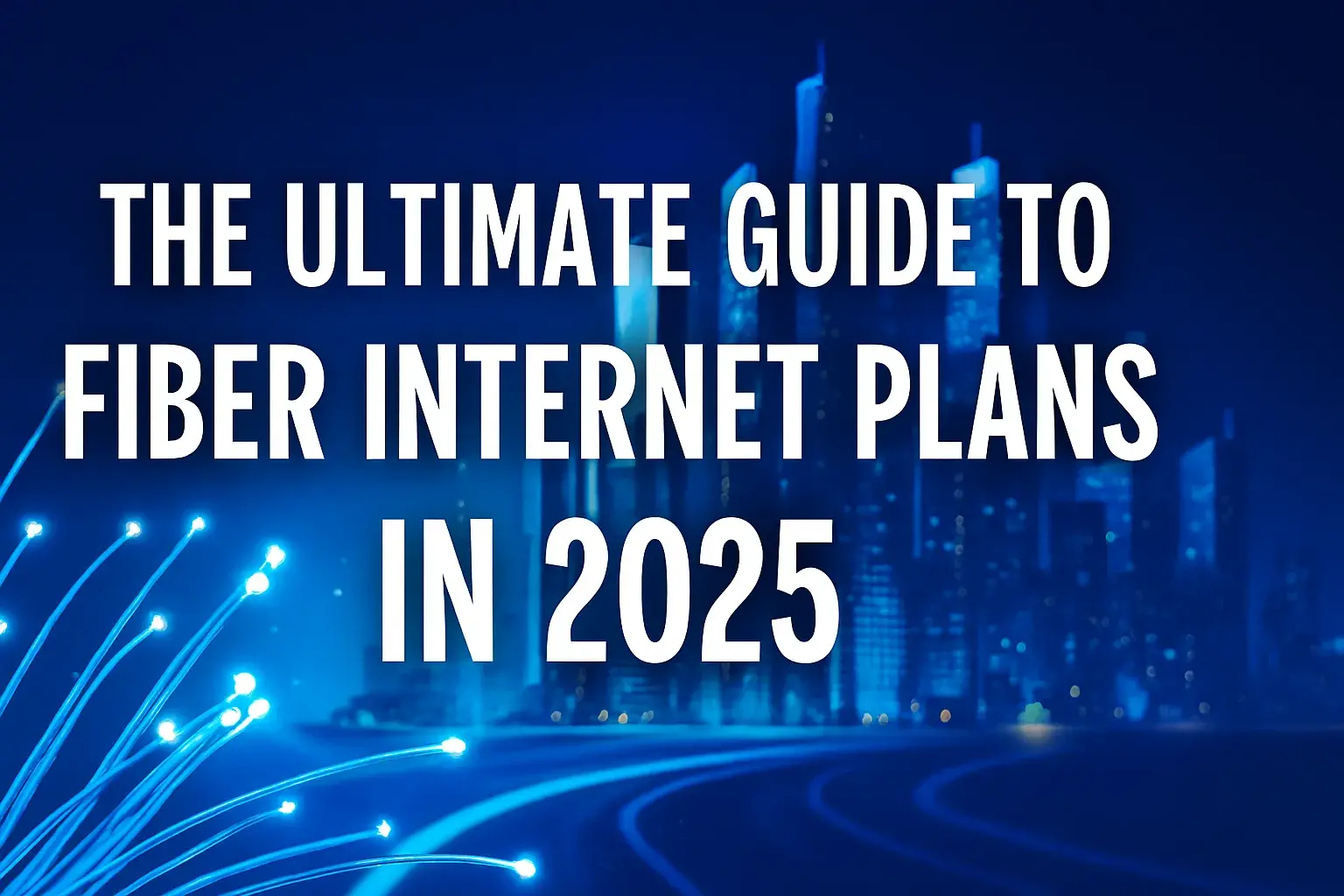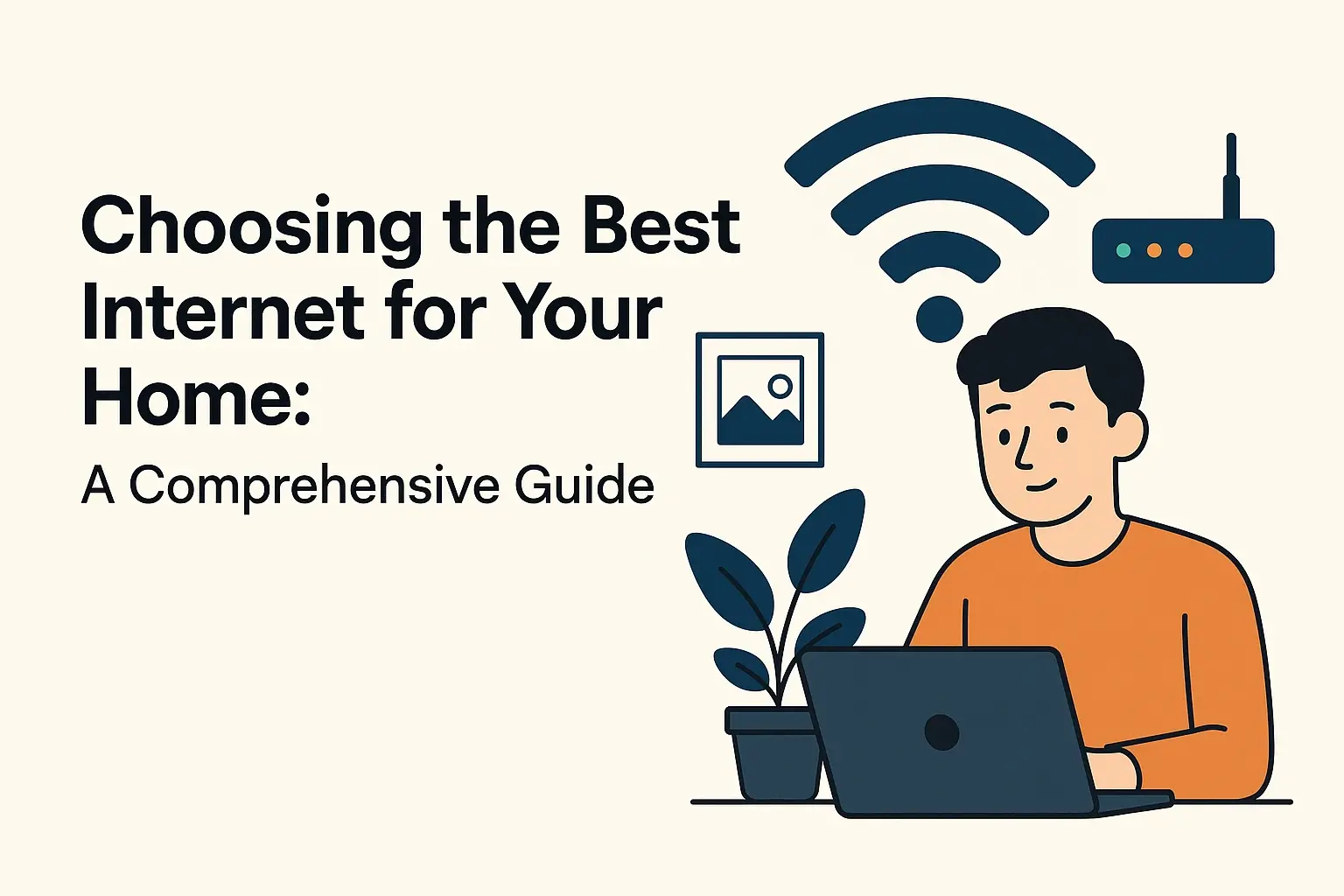These 5 Cities Will Have the Fastest Fiber Internet by the End of 2026

Discover the top 5 cities poised to offer the fastest fiber internet speeds by the end of 2026. This guide examines the technological advancements, infrastructure investments, and market trends driving the hyper-connectivity revolution, enabling you to understand the future of digital access.
The Dawn of Hyper-Connectivity: A Glimpse into 2026's Fastest Fiber Cities
The digital age is accelerating at an unprecedented pace, and at its core lies the relentless pursuit of faster, more reliable internet connectivity. Fiber optic technology, with its ability to transmit data at the speed of light, is the undisputed champion in this race. As we stand in mid-2025, the groundwork is being laid for a future where gigabit speeds are not just a luxury but a standard. By the close of 2026, several cities are set to emerge as beacons of hyper-connectivity, offering internet speeds that will redefine our digital experiences. This article explores which cities are leading the charge, examines the technological underpinnings of their ascent, and considers the implications for residents and businesses. We will explore the investments, innovations, and strategic planning that are propelling these urban centers to the forefront of the global broadband revolution. Prepare to discover the cities that will be synonymous with lightning-fast fiber internet in the near future, transforming how we work, play, and connect.
Understanding the Fiber Optic Revolution
Before we pinpoint the cities leading the charge, it's crucial to understand what makes fiber optic internet so revolutionary. Unlike traditional copper-based technologies like DSL or cable, fiber optics utilizes thin strands of glass or plastic to transmit data as pulses of light. This fundamental difference unlocks a world of performance advantages.
How Fiber Works: The Science Behind the Speed?
Data is encoded into light signals and sent through the fiber optic cable. At the receiving end, these light signals are decoded back into data. Because light travels incredibly fast and is not susceptible to electromagnetic interference like electrical signals over copper, fiber optic connections offer:
- Unparalleled Speed: Theoretical speeds can reach terabits per second (Tbps), far exceeding the gigabit (Gbps) speeds commonly advertised today. Even current deployments offer symmetrical upload and download speeds of 1 Gbps, 2 Gbps, or even 10 Gbps.
- Lower Latency: The time it takes for data to travel from source to destination is significantly reduced, crucial for real-time applications like online gaming, video conferencing, and remote surgery.
- Greater Reliability: Fiber optic cables are more durable and less prone to damage from environmental factors like moisture, temperature fluctuations, or electrical surges compared to copper wires.
- Bandwidth Capacity: Fiber can carry vastly more data than copper, ensuring that networks can handle the ever-increasing demand from streaming services, cloud computing, and the Internet of Things (IoT).
The Evolution from Copper to Light
For decades, the internet backbone relied on copper infrastructure. While adequate for its time, the limitations became apparent as data consumption exploded. The transition to fiber optics, often referred to as Fiber-to-the-Home (FTTH) or Fiber-to-the-Premises (FTTP), represents a fundamental upgrade. This involves running fiber optic cables directly to individual homes or businesses, bypassing older technologies entirely. This "full fiber" deployment is key to achieving the highest possible speeds and future-proofing connectivity.
2025: The Landscape of Fiber Internet Today
As of mid-2025, the fiber optic landscape is dynamic and rapidly evolving. Major telecommunications companies and smaller, agile providers are investing heavily in expanding their fiber networks. Government initiatives and public-private partnerships are also playing a significant role in accelerating deployment, particularly in underserved areas. We are seeing a clear trend towards higher speed tiers becoming more mainstream.
Current Speed Benchmarks and Availability
Currently, the most common high-speed fiber plans offer symmetrical speeds of 1 Gigabit per second (1 Gbps). However, 2 Gbps and even 10 Gbps plans are increasingly available in major metropolitan areas and are becoming the benchmark for cutting-edge connectivity. According to recent industry reports from 2025, the percentage of US households with access to gigabit broadband (primarily fiber) has surpassed 60%, a significant jump from just a few years ago. However, actual adoption rates and the availability of the absolute fastest speeds (multi-gigabit) vary considerably by region. Cities that have prioritized fiber infrastructure development are already experiencing these benefits.
Key Players and Investment Trends
Major players like AT&T, Verizon, Google Fiber, and numerous regional providers are in a race to expand their fiber footprints. Investment is driven by several factors: the increasing demand for bandwidth-intensive applications (4K/8K streaming, cloud gaming, remote work tools), the competitive pressure to offer superior services, and the recognition of fiber as a long-term, future-proof infrastructure. Venture capital is also flowing into smaller, specialized fiber network builders focusing on specific communities or business parks. The trend in 2025 is a clear acceleration of fiber build-outs, with providers actively seeking to capture market share by offering the fastest available speeds.
Projecting the Future: Identifying the Top 5 Cities for Fiber by 2026
Predicting the future involves analyzing current trends, announced infrastructure projects, and investment commitments. Based on these factors, several cities are strongly positioned to offer the fastest fiber internet speeds by the end of 2026. These selections are based on a combination of aggressive network expansion plans, high existing fiber penetration, and the rollout of multi-gigabit services.
1. Kansas City, Missouri/Kansas
Often cited as one of the first major cities to embrace Google Fiber, Kansas City has a significant head start in fiber infrastructure. Google Fiber continues to expand its multi-gigabit offerings here, with plans for 2 Gbps and 10 Gbps services becoming more widespread. Beyond Google, other providers are also investing in the region, ensuring robust competition and driving faster speeds. The city's early adoption has fostered a tech-friendly environment, further encouraging high-speed internet development.
2. Austin, Texas
Austin has long been a hub for technology and innovation, and its internet infrastructure reflects this. Major providers like AT&T and Google Fiber have a strong presence, offering competitive gigabit and multi-gigabit fiber plans. The city's rapid growth and influx of tech companies create a constant demand for high-speed connectivity, spurring further investment. By 2026, Austin is expected to see widespread availability of 10 Gbps fiber services for both residential and business customers.
3. Atlanta, Georgia
Atlanta is experiencing a significant fiber build-out, with providers like AT&T rapidly expanding their Fiber services across the metro area. The city's status as a major economic and transportation hub, coupled with a growing tech sector, makes it a prime target for high-speed internet deployment. By 2026, expect a substantial portion of Atlanta residents and businesses to have access to multi-gigabit fiber speeds, with 10 Gbps options becoming increasingly common.
4. Provo, Utah
Provo, often recognized for its early adoption of fiber through its municipal network (UVU Fiber, now part of Intermountain), continues to be a leader in high-speed internet. The city has a robust fiber infrastructure already in place, and providers are actively upgrading to offer even faster speeds. By 2026, Provo is poised to offer some of the fastest residential and business fiber connections in the nation, likely including 10 Gbps tiers as a standard offering for many.
5. Raleigh-Durham (Research Triangle Park), North Carolina
The Research Triangle Park area is a powerhouse of innovation and technology, driving a strong demand for cutting-edge connectivity. Major providers are heavily investing in fiber deployment across Raleigh, Durham, and the surrounding areas. The presence of universities and numerous tech companies creates a fertile ground for high-speed internet adoption. By 2026, this region is expected to see widespread availability of multi-gigabit fiber, solidifying its position as a leader in digital infrastructure.
Factors Driving Fiber Speed Supremacy
Several key factors contribute to a city's ability to achieve and maintain leadership in fiber internet speeds. Understanding these elements helps explain why certain regions are outpacing others.
Infrastructure Investment and Deployment
The most critical factor is the sheer volume of investment in deploying fiber optic cables. This includes "dig once" policies, where fiber conduits are laid during other infrastructure projects (road repairs, utility upgrades), and dedicated fiber build-out initiatives. Cities that have attracted significant private investment or have strong municipal broadband programs tend to lead.
Competitive Market Landscape
A competitive market, with multiple providers vying for customers, naturally drives innovation and speed. When providers like Google Fiber, AT&T, Verizon, and local players compete, they are incentivized to offer the fastest possible speeds and the most attractive packages. This competition is a significant catalyst for achieving multi-gigabit services.
Technological Advancements
The underlying technology for fiber transmission is constantly improving. Standards like XGS-PON (10 Gigabit Symmetrical Passive Optical Network) and NG-PON2 are enabling providers to deliver 10 Gbps and beyond over existing fiber infrastructure. The ability of providers to upgrade their network equipment without necessarily replacing all the physical fiber is key to rapid speed increases.
Regulatory Environment and Permitting
Streamlined permitting processes and supportive regulatory environments can significantly accelerate fiber deployment. Cities that make it easier and faster for providers to gain access to poles, rights-of-way, and necessary permits can see quicker build-outs. Conversely, bureaucratic hurdles can slow down progress considerably.
Demand from Residents and Businesses
Areas with a high concentration of tech-savvy residents, remote workers, startups, and established tech companies naturally have a higher demand for ultra-fast internet. This demand signals to providers that there is a viable market for premium, high-speed services, encouraging investment and faster deployment.
Preparing Your Home for Next-Gen Speeds
Even if your city is on the cusp of offering blazing-fast fiber, your home's internal network can be a bottleneck. To truly experience the benefits of multi-gigabit internet, you need to ensure your home setup can handle it.
The Router is Key
Your router is the gateway to your home network. If you're signing up for gigabit or multi-gigabit speeds, you'll need a router capable of handling those speeds. Many providers offer their own high-performance routers, but if you're using your own, ensure it supports at least Wi-Fi 6 (802.11ax) or Wi-Fi 6E for optimal wireless performance. For wired connections, ensure your router has Gigabit Ethernet ports (or faster, if available) and that your internal Ethernet cabling (if applicable) is Cat 6 or higher.
Device Compatibility
Even with the fastest internet connection, your devices need to be able to utilize those speeds. Older laptops, smartphones, and smart TVs might have Wi-Fi adapters or Ethernet ports that are not capable of reaching gigabit speeds. Look for devices that support the latest Wi-Fi standards or have Gigabit Ethernet ports. For truly demanding applications, a wired Ethernet connection will always provide the most stable and fastest performance.
Consider Your Usage Needs
While 1 Gbps is sufficient for most households today, 2 Gbps or 10 Gbps plans are beneficial for power users. This includes households with multiple users simultaneously streaming 4K/8K video, engaging in competitive online gaming, utilizing cloud-based productivity suites, running multiple smart home devices, or performing large file transfers regularly. For the average user, 1 Gbps will likely suffice for the foreseeable future, but planning for multi-gigabit ensures you're future-proof.
Beyond Speed: What to Look for in a Fiber Provider
While headline speeds are exciting, choosing the right fiber provider involves more than just looking at the highest number. Several other factors are crucial for a positive internet experience.
Symmetrical Speeds
Fiber optic connections are inherently capable of symmetrical speeds (upload = download). This is a significant advantage over cable internet, where upload speeds are often a fraction of download speeds. For video conferencing, uploading large files, or live streaming, symmetrical speeds are essential. Always check if the advertised speed is symmetrical.
Data Caps and Throttling
Reputable fiber providers typically do not impose data caps, especially on their higher-speed plans. Ensure the provider you choose offers unlimited data to avoid surprise charges or throttled speeds after exceeding a certain usage threshold.
Contract Terms and Pricing
Understand the contract length, any introductory pricing that will increase after a certain period, and early termination fees. Transparent pricing is a hallmark of a good provider. For example, a 10 Gbps plan might be advertised at $100/month, but check if that price is fixed for a year or two, or if it jumps significantly afterward.
Customer Service and Reliability
Speed is important, but so is reliable service and responsive customer support. Research customer reviews and independent network reliability reports for providers in your area. A provider with slightly lower speeds but excellent uptime and support might be a better choice than one with the absolute fastest speeds but frequent outages and poor service.
Installation Process
Inquire about the installation process. Will they run fiber directly to your home? Are there any setup fees? A smooth and professional installation is crucial for ensuring your new fiber connection works as expected from day one.
The Economic and Social Impact of Ultra-Fast Internet
The availability of ultra-fast fiber internet in cities has profound implications that extend far beyond faster downloads.
Economic Growth and Innovation
Cities with robust fiber infrastructure become magnets for technology companies, startups, and skilled workers. This fosters innovation, creates high-paying jobs, and boosts the local economy. Businesses can operate more efficiently, leverage cloud services seamlessly, and engage in global markets more effectively. For example, the presence of 10 Gbps fiber in Austin has undoubtedly contributed to its status as a major tech hub.
Enhanced Education and Healthcare
Ultra-fast internet enables advanced educational tools, remote learning opportunities, and access to vast online resources. In healthcare, it facilitates telehealth appointments, remote patient monitoring, and the transmission of large medical imaging files, improving access to care, especially in rural or underserved areas within a metropolitan region.
Improved Quality of Life
For residents, faster and more reliable internet means seamless streaming of entertainment, efficient remote work capabilities, and better connectivity for smart home devices. It reduces the digital divide and ensures that all citizens can participate fully in the digital economy and society.
Attracting and Retaining Talent
In today's competitive job market, high-speed internet is no longer a perk but an expectation. Cities that offer superior connectivity are more attractive to businesses and skilled professionals, helping them retain talent and attract new residents.
Challenges and Opportunities in Fiber Deployment
Despite the clear benefits, the path to widespread, ultra-fast fiber deployment is not without its challenges.
High Upfront Costs
Laying fiber optic cable, especially "from the ground up," requires significant capital investment. Trenching, aerial deployment, and connecting individual premises are labor-intensive and expensive undertakings.
Permitting and Bureaucracy
Navigating local regulations, securing permits for digging or pole access, and dealing with various municipal requirements can be time-consuming and costly, often delaying projects.
Competition with Existing Infrastructure
In areas already served by established cable or DSL providers, building new fiber networks can be economically challenging. Providers must convince customers to switch, which requires competitive pricing and superior service.
Opportunity for Municipal and Public-Private Partnerships
These challenges also present opportunities. Municipal broadband initiatives, where local governments build and operate their own fiber networks, can ensure equitable access. Public-private partnerships can leverage the strengths of both sectors to accelerate deployment and reduce costs. The ongoing federal and state funding initiatives for broadband expansion are creating significant opportunities to overcome these hurdles.
Conclusion
As we look towards the end of 2026, the internet connectivity landscape is poised for a dramatic upgrade, with specific cities set to lead the charge in offering unprecedented fiber internet speeds. Our analysis highlights Kansas City, Austin, Atlanta, Provo, and the Raleigh-Durham area as frontrunners, driven by substantial infrastructure investments, competitive market dynamics, and technological advancements. These urban centers are not just adopting faster speeds; they are actively building the digital highways of the future, enabling transformative applications in business, education, and daily life. The transition from copper to fiber optics is more than an incremental improvement; it's a fundamental shift that unlocks lower latency, greater reliability, and vastly superior bandwidth.
For residents and businesses in these areas, the benefits will be tangible: seamless 4K/8K streaming, lag-free online gaming, highly efficient remote work environments, and the potential for groundbreaking innovations in telehealth and smart city technologies. However, to fully capitalize on these speeds, individuals must also ensure their home network infrastructure—routers, devices, and internal wiring—is up to the task. Choosing the right provider goes beyond headline speeds, encompassing factors like symmetrical upload/download rates, data caps, contract transparency, and customer service reliability.
While challenges such as high upfront costs and regulatory hurdles persist, the opportunities for economic growth, an enhanced quality of life, and a more connected society are immense. The continued expansion of fiber optic networks is a critical step in bridging the digital divide and ensuring that communities can thrive in an increasingly digital world. By staying informed about these developments and preparing your own digital environment, you can be ready to harness the full power of the fastest fiber internet by 2026 and beyond.
Call on (855) 210-8883 to get the best internet provider in 2026 now!
Faq
Which U.S. cities are expected to have the fastest fiber internet by 2026?
According to emerging provider expansion plans and speed test projections, cities like Austin (TX), Chattanooga (TN), Kansas City (MO), Raleigh (NC), and San Jose (CA) are expected to lead the nation in fiber internet speeds by the end of 2026.
What factors determine which cities get the fastest fiber internet?
Fiber speed depends on infrastructure investment, provider competition, local government support, and consumer demand. Cities investing in smart grid and gigabit networks tend to see faster rollouts and lower latency connections.
How fast will fiber internet speeds reach by 2026?
By late 2026, residential fiber plans in major U.S. cities are projected to offer up to 10 Gbps download speeds, with average users experiencing 2–5 Gbps connections as providers upgrade backbone networks.
Which providers are leading fiber expansion in 2026?
Major providers like AT&T Fiber, Google Fiber, Frontier, and Verizon Fios are aggressively expanding coverage in urban and suburban areas, while regional networks such as EPB Fiber and Ting Internet are improving local gigabit accessibility.
How can residents find out if their city is getting fiber upgrades in 2026?
Users can check availability through official ISP websites, FCC broadband maps, or local city development portals that publish infrastructure expansion updates. Signing up for provider alerts also helps residents get early access to new fiber plans.





